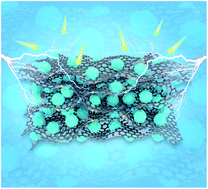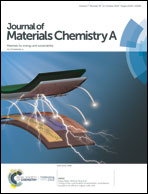Integrated insights into Na+ storage mechanism and electrochemical kinetics of ultrafine V2O3/S and N co-doped rGO composites as anodes for sodium ion batteries†
Abstract
Sodium ion (Na+) storage and kinetics are of great importance for the development of high-performance sodium ion batteries. Herein, we report a composite of ultrafine V2O3 nanoparticles evenly anchored into three-dimensional S,N co-doped rGO conductive networks as a promising anode material for sodium ion batteries. Such a subtle architecture effectively connects isolated V2O3 nanoparticles into a structure with integrity, suppresses their aggregation and introduces more active sites, which significantly facilitates Na+ storage and the kinetics. Electrochemical analysis, in situ X-ray diffraction and density functional theory computations verified the Na+ storage mechanism, where one Na+ inserts into per V2O3 formula unit without crystallographic phase transition, coupling with small variations in the unit cell volume. In addition, V2O3 has preferable ability for interfacial Na+ storage, which was validated by strong Na+ adsorption on the (113) crystal plane. When used as an anode material for sodium ion batteries, this composite exhibited admirable rate capability and ultralong cycle durability. Furthermore, full cells of V2O3/S,N co-doped rGO//Na3V2(PO4)3@rGO also showed excellent electrochemical performance, demonstrating prospective applications to sodium ion batteries.



 Please wait while we load your content...
Please wait while we load your content...